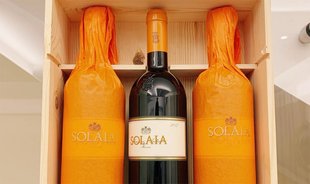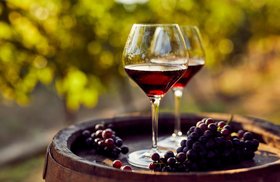Solaia (Winemaking, Best Wines to Buy in 2025)
What makes the brilliant Solaia wine so unique, and which bottles should you buy?
The Antinori Solaia wine hails from the sun-soaked hillsides of the Chianti Classico region of Italy. Its character reflects the opulence and intensity of the sunny terroir — traits that have earned Solaia a loyal following worldwide.
How is it made, and which bottles should you buy in 2024?
Let’s look at how Solaia came to be — its sunny vineyard, winemaking, and how it achieved its iconic status. We’ll also dive into its investment potential and the Easiest Way To Invest In It.
Further reading
- Discover the smartest Wine Investment methods in this insightful guide.
- Explore some of the most sultry Bordeaux Wines for your wine cellar in 2024!
- Check out these Exquisite Gewurztraminer Wines that you simply cannot miss out on!
A Quick Look Into Solaia Wine
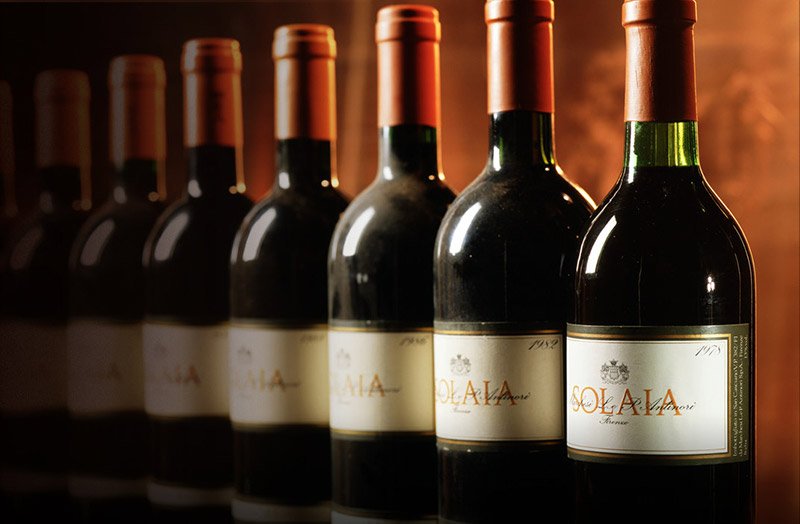
Solaia is a red wine known for its intense, sweet ripe cherry and blackcurrant fruit flavors. It comes from the sprawling stable of Marchesi Antinori, one of the largest and most prominent wine producers in Italy.
Solaia is based on the Cabernet Sauvignon grape (unlike its brother, Tignanello, the Sangiovese-based wine that’s made in the same estate.)
The first two releases of Solaia, in 1978 and 1979, were in fact, a blend of only Cabernet Sauvignon and Cabernet Franc. The addition of Sangiovese came in later vintages as Antinori continued to refine the wine.
Today’s Solaia is typically 75% Cabernet Sauvignon, 20% Sangiovese, and 5% Cabernet Franc and is designated as Toscana IGT. It’s aged in new French oak barriques, in its own ancient cellar that dates back to the 16th century.
Antinori has several vineyard holdings throughout the region and around the world. These include Tenuta Tignanello, which produces Solaia, Pian Delle Vigne for their Brunello di Montalcino, Guado al Tasso in the Bolgheri DOC, and Antica in Napa Valley.
Winemaker Marchesi Antinori’s Journey: A Brief History

The Antinori family has been producing exceptional wines for 26 generations and has been indelibly associated with wine since the 14th century.
It began in 1385 when Giovanni di Piero Antinori became a member of the Florentine Winemakers’ Guild.
In the 1900s, Antinori acquired the Tignanello vineyard, using it as a laboratory of sorts. He experimented with different winemaking methods and non-native grapes.
When Piero Antinori took the helm in 1961, he and his enologist, Giacomo Tachis, experimented further with French grapes and techniques. This included stainless steel vat fermentation, barrique aging, and allowing malolactic fermentation to occur in the barrel.
These efforts resulted in two of Antinori’s most famous Super Tuscan wines! Tignanello was released in 1971 and Solaia soon after, in 1978.
Winemakers started using non-indigenous grape varietals to make high-quality wines (against Italian wine rules of the time). As the wines didn’t meet DOC standards, they were designated as Vino da Tavola (VdT).
The term “Super Tuscan” was coined to separate these fine wines from the inexpensive VdT table wines. It's a term used to describe Tuscan wines that include non-native grapes like Merlot, Cabernet Sauvignon, and Syrah. Today, most Super Tuscans are designated as IGT or Bolgheri DOC.
Although rival Sassicaia is known as the original Super Tuscan wine, it’s the Antinori estate, with its impeccable history and cultural standing in Italy, that helped alter attitudes to what Italian wine could be.
The success of wines like Solaia, Tignanello, and Sassicaia inspired other Italian producers to break the mold and experiment with non-native grape varietals.
Now let’s take a closer look at the Tignanello estate.
Read more: Champagneis glorious to drink and collect. It’s also great for concocting wonderful cocktails like the Mimosa, Sangria, or Kir Royale!
The Tenuta Tignanello Estate and the Solaia Vineyard
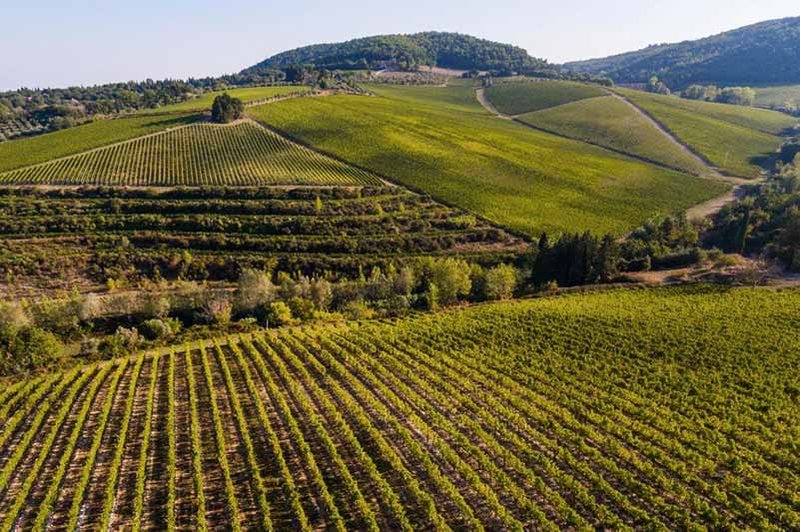
The Tenuta Tignanello estate lies at the heart of the Chianti Classico region, between the Pesa and Greve valleys. At 350-400 meters above sea level, it’s known as one of the highest and most picturesque localities in the entire territory.
The 130-hectare vineyard is divided into smaller parcels. The Solaia and Tignanello vineyards lie on the gentle southwest-facing slope, with marine marlstone from the Pliocene period that’s rich in limestone and schist.
The vines enjoy warm temperatures during the day and cooler evenings through the growing season. But the Solaia vineyard, which loosely translates to “the Sunny One,” gets the most sunshine.
The Solaia vineyard is 20 hectares with vines that average 15 years old. 75% of the vineyard is dedicated to Cabernet Sauvignon, 5% Cabernet Franc, and the remaining 20% is planted with Sangiovese grapes.
Other than for the Solaia and Tignanello wines, grapes for the Marchesi Antinori Riserva are also sourced exclusively from the Tenuta Tignanello vineyard.
Now, let’s take a look at Solaia vintages.
Further reading:
Find out exciting facts about these popular red wines:
Barbera wines are juicy and approachable, Malbec is fruity, while Zinfandel is uniquely jammy and smoky.
The Best Antinori Solaia Vintages to Collect
Solaia is only produced in exceptional vintages. It wasn’t made in 1980, 1981, 1983, 1984, and 1992.
One divergent vintage to note is 2002. That year, the Sangiovese grape wasn’t of satisfactory quality for Solaia, so only Cabernet grapes were used. The 2002 vintage is known as “annata diversa” (different vintage).
Read more: Here are some white wines to try in 2023 - 10 crisp Sauvignon Blancs and 10 spectacular Rieslings!
Here are the incredible Solaia vintages of recent years.
1. Antinori Solaia 2017

The 2017 vintage had unusual weather conditions, and the Solaia 2017 is an intense, deep ruby red color with an outgoing personality.
It displays an impressive burst of bright cherry, black currant, iron, and spice on the nose. You’ll find aromas of white pepper, toasted cinnamon, and cocoa powder. These lead to graphite minerality, leather, and lemon thyme notes.
On the palate, it is creamy and full, refined with meaty tannins, lively acidity, and impeccable balance, driving to a lengthy finish and persistent aftertaste.
Price of 2017 Antinori Solaia: $330+
2. Antinori Solaia 2016

2016 was an exceptional vintage, characterized by slightly cool weather and light rains through the growing season.
It displays an intense, aromatic richness with ripe dark fruit notes fused with balsamic notions of mint and herbs. Notes of chocolate and cotton candy intermingle with suggestions of white pepper, adding complexity to the bouquet.
A rich palate is enveloped with supple, silky tannins delivering elegance of fruity expression.
Price of 2016 Antinori Solaia: $390+
3. Antinori Solaia 2015

The stunning 2015 Solaia is considered one of the greatest Solaia wines ever made, garnering 100 points from Wine Advocate and James Suckling.
2015 was a warm vintage that’s less favorable with grapes that display their full elegance in the cooler vintages. In this vintage, Solaia fully evokes the unique Tuscan wine archetype - liquid sunshine not just in name but also taste!
On the nose, it is soft and sensual with dark fruit, sweet tobacco, roses, violets, and spice. The mouthfeel shows power and intensity but no heavy residue from the dry extract. It is full-bodied, harmonious, with polished tannins and an extremely long finish.
Price of 2015 Antinori Solaia: $396+
4. Antinori Solaia 2014

The 2014 vintage was a difficult one from a climactic point of view. The resulting wine is less powerful but unquestionably stylistic in character with high longevity.
An intense ruby red, the 2014 Solaia offers a complex bouquet richly concentrated in red and black fruit, along with notes of vanilla, black pepper, and licorice.
The exquisite palate is balanced, fresh in its flavors, with a solid texture and silky tannins. The finish displays great finesse and persistence with notes of fruit and spices.
Price of 2014 Antinori Solaia: $279+
5. Antinori Solaia 2013

This wine from the Antinori vineyard has a rich color, aroma, and an intense expression of fruit.
Marchesi Antinori's 2013 Solaia wine is a vivid ruby red color with purple highlights. Aromas of ripe red fruit, vibrant and fresh, are accompanied by licorice and mint. Hints of vanilla and smoke on the aromatic closing blend with intense spiciness.
On the palate, the wine is structured, full-bodied, elegant, and has solid tannins.
Price of 2013 Antinori Solaia: $294+
6. Antinori Solaia 2012

The 2012 Solaia has a classic style, characterized by a pleasurable harmony of flavors. There’s a delicate balance between acidity and supple tannins on the palate, and a high level of fruitiness.
You’ll find the taste of ripe dark fruits of blueberries, plums, and blackberries, ending with an exceptionally vibrant and complex persistence.
Price of 2012 Antinori Solaia: $304+
7. Antinori Solaia 2010

The ample rainfall, cold temperatures, and periodic snowfall of 2010 in Chianti Classico led to a lengthened period of repose in the vineyard and a delayed bud break.
The resulting 2010 Solaia takes its time to open to notes of herbs, black raspberry, and currants beneath the cedar and spice. The long growing season is perceptible in the full ripeness of flavor, and ample, supple structure.
On the palate, there is dense fruit with mouth-filling tannins that drive to a long, powerful finish.
Price of 2010 Antinori Solaia: $304+
Read more: Explore the magnificent, collectible Châteauneuf du Pape wines, or more of the incredible wines of the Chianti region.
Investing in Solaia Wine
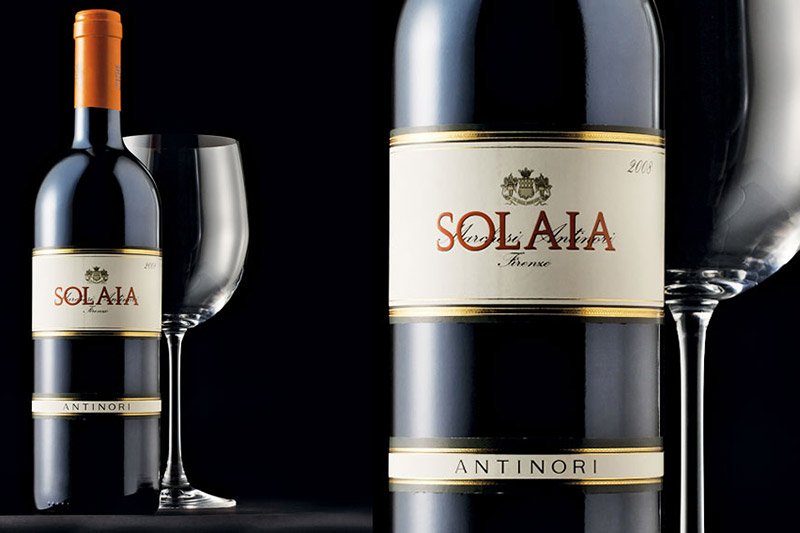
Antinori’s Solaia and Tignanello represent incredible value and are venerated alongside the likes of Bordeaux First Growths.
Solaia is slightly pricier than Tignanello due to its smaller production volume. Only 3000-7000 cases of Solaia are produced annually compared to Tignanello’s 20000-30000 cases.
Solaia’s consistently high critical scores and ability to age well (15-30 years) adds to its tremendous worth. The 2015 Solaia, for example, achieved a 100 point score and is tipped to be the perfect Solaia.
Apart from Solaia, the other Super Tuscans (the icon wines like Tignanello, Sassicaia, Ornellaia and Masseto) are also hot investment options in 2023.
So, what’s the best and easiest way for you to buy these brilliant wines?
A wine investment company like Vinovest can help you buy your Solaia (or any wine from New York, Chile or Australia) easily!
Also read: The best Champagne glasses to collect, drink from, or to gift.
Buy Aromatic Solaia and Other Super Tuscans Through Vinovest

Vinovest is an online-based wine investment platform that helps you buy, authenticate, store, and sell any wine — for investing or drinking. You’ll have easy access to wines like the super-exclusive Chateau Lafite, Pomerol, Pouilly-Fuissé, and many others!
How it works
Just follow these four easy steps:
- Sign up
- Fill a quick questionnaire to inform Vinovest of your risk appetite and investment preferences.
- Place funds in your account (a minimum of $1,000).
Watch your wine portfolio online grow as you sip on a Pinot Blanc or a
The benefits
Here are some benefits to signing up with Vinovest.
1. Buy and sell wines easily
Through Vinovest’s intelligent online platform, you can easily buy and sell wines anytime, from anywhere in the world.
2. Best below-retail prices
Vinovest sources wines from private wineries, wine exchanges, and wholesalers globally—so you can get your wines at the best below-retail values.
3. Provenance and authenticity
Vinovest verifies the provenance and authenticates every bottle before you buy.
4. Expert-curated portfolio
Vinovest's expert team of data scientists and sommeliers will help you create a wine portfolio using a proprietary, high-performing investment model.
5. Secure storage
Your wines are secured in bonded warehouses under optimal conditions of temperature, humidity, light, and vibration. Power backups are on standby to maintain the same conditions even during emergencies.
6. Insurance
Vinovest offers a comprehensive insurance policy to protect your wines.
7. Easy delivery
Vinovest delivers your wine bottles right to your doorstep or to your buyer's (if you sell the bottles.)
8. Low overall costs
Vinovest charges a 2.5% annual fee, which gets reduced to 1.9% when your portfolio balance exceeds $50,000. This includes wine buying, wine fraud detection, insurance, storage, and selling as well as active management of your portfolio.
You’ll also enjoy significant tax advantages as the bonded warehouses don’t charge excise duty or VAT.
9. Ownership
Any wine you buy through Vinovest is yours.
A Taste of Liquid Tuscan Sunshine!
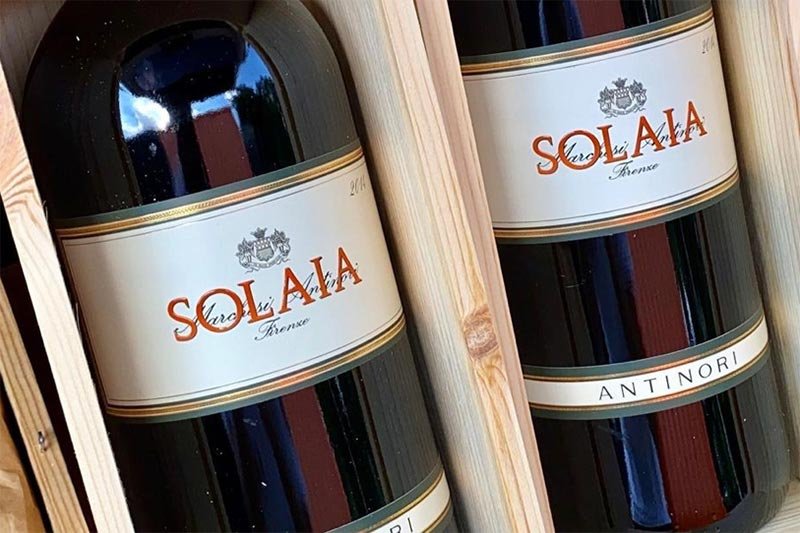
Who doesn’t want a taste of liquid sunshine from a vineyard in Tuscany, right?
Solaia offers excellent value for wine collectors and wine drinkers.
And, the smartest way to buy it is through Vinovest.
So, why not sign up right away and let Vinovest help you build an enviable wine portfolio?
